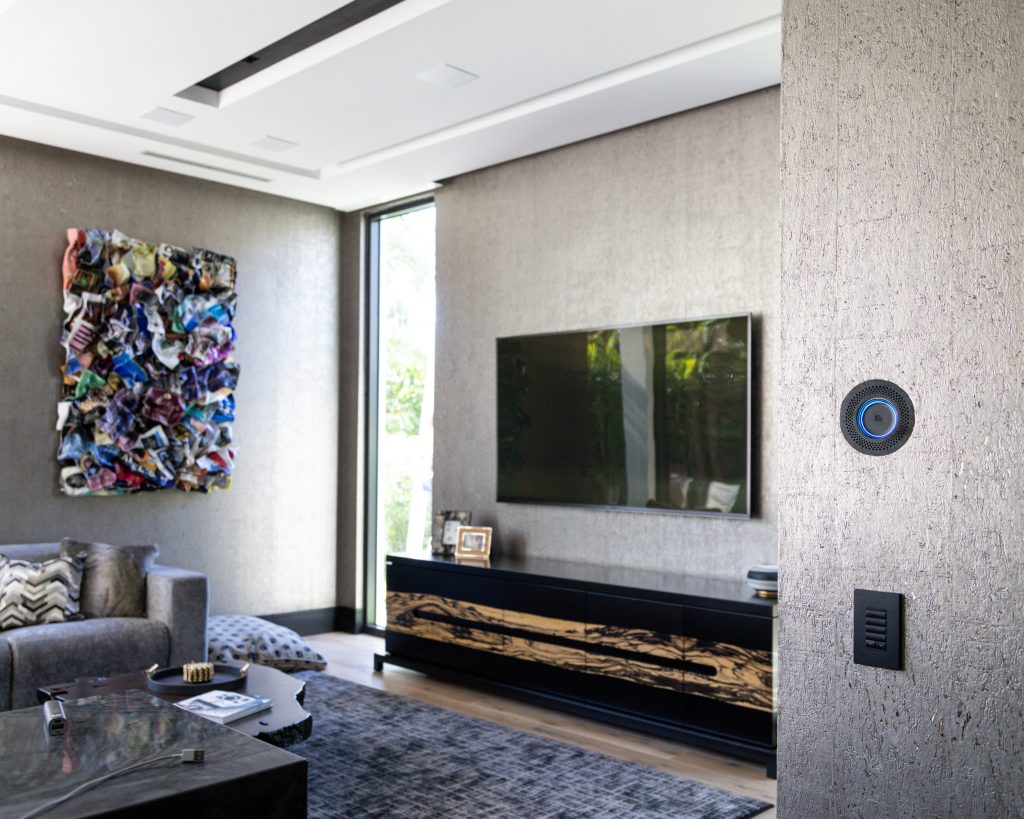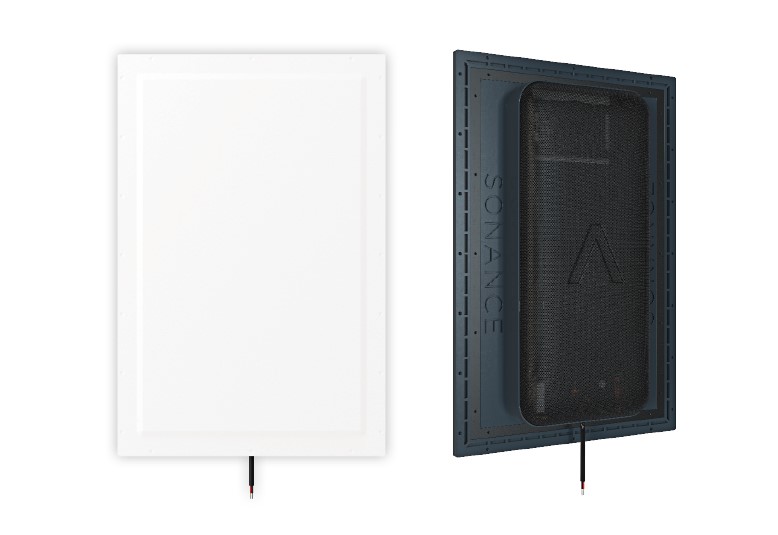For many families working and schooling from home, 2020 wasn’t the ideal time to redo a space as essential as the kitchen or bathroom, noted Todd Tomalak, principal at JBREC, in the National Kitchen & Bath Association (NKBA) and John Burns Real Estate Consulting (JBREC) Q3 2020 Kitchen & Bath Market Index (KBMI). However, as we settle into 2021, designers and technology integration pros are reporting a significant uptick in both inquiries and project starts.
In fact, NKBA’s recently released 2021 Market Outlook report—based on homeowner feedback—reports a tailwind of big interior projects and indoor kitchen remodels, and indicates smart home products will be a popular premium feature upgrade. That’s opportunity knocking!
“Smart kitchens and bathrooms used to be nothing more than a concept—a vision of the future—but now they’re quite common,” notes Gordon Van Zuiden, owner of CA-based systems integration firm cyberManor, whose new smart home experience center near Silicon Valley features top-of-the-line connected appliances and technology.
Van Zuiden remodeled a former schoolhouse into a home with high-end kitchen appliances by Thermador and Bosch; a bathroom outfitted with Kohler’s Veil intelligent toilet and Konnect DTV+ spa showering system; and smart energy by Sonnen to illustrate how design and tech not only harmoniously coexist but complement each other.
“Consumers are demanding design-forward homes and expect tech to play a role. That’s where we come in—to help guide the conversation and deliver the experience.”
Here are a few things to consider as you design to accommodate today’s top tech.
The Network Is King
A home’s technology, much like its physical infrastructure, needs a solid foundation to perform at its best. Without fast, reliable connectivity, any device that connects to the network to enable or operate smart features will struggle.
High-end, built-in appliances, like those from Signature Kitchen Suite, LG, Bosch, Thermador and Gaggenau, now also rely on the home network, some with app-driven recipes and cooking instructions and remote service capabilities, which help assuage the fears of those unaccustomed to smart home technology.
Add to that other data-intensive smart appliances like voice assistants, voice-controlled faucets, connected showering systems, media room systems, smart speakers, HVAC, and just about everything else in the modern home, and you can see why the network is absolutely critical.
Hiding Tech in Plain Sight
If your clients are planning a project with smart home features and functionality, it’s crucial to provide them with a variety of options early-on in the design process.
Many technology manufacturers are taking an innovative, design-forward approach to product development so that technology can now be hidden in plain sight and so that your designs can truly take center stage.
“The most popular homeowner request for technology in a kitchen and bathroom is speakers,” says Rocky Settacasi, a design consultant at TRI Phase Techologies in Zionsville, IN. Background music can evoke a variety of moods, making a room feel warm and welcoming one minute, and relaxing, reflective, energetic or entertaining the next.
The standard design-conscious solution is typically speakers mounted flush with the ceiling surface. Round and relatively small, they resemble light fixtures for minimal visual impact. “But why pockmark the ceiling when speakers can completely disappear?” Settecasi proposes. “Some speakers, like Sonance’s Invisible Speaker line, can be covered with a coat of finishing compound and paint, venetian plaster, wallpaper, wood veneer, you name it. Because you can’t see them, invisible speakers allow us to place speakers where they will work best instead of trying to work them into the layout of the ceiling lights—often a challenge and not always the best approach for even, balanced audio coverage. Products like these, are game-changers for rooms like kitchens and baths.”
Mirror, TV, on the Wall
“A mirror is a must in the bathroom. And in the kitchen, it creates the illusion of space and light,” says Elizabeth Goldfeder of Reflectel, a maker of high-performance, custom-framed mirror TVs in virtually any shape or size to complement your kitchen or bath design.
OLED or QLED displays are discreetly hidden behind the glass, completely invisible until turned on. The homeowner can queue music, check messages, and check connected security cameras to see who’s at the door. Beautiful and functional, mirror TVs have attracted some of the country’s most prestigious designers, and are showcased at design showrooms, including Christopher Peacock, Aster Cuciene, Bloomingdale’s and Urban Home. When using a mirror TV, it’s also important to make sure everything is properly connected and secure on the network to maintain privacy.
Beautifully Integrated Control
When it’s dark, hands are full, or relaxation is the objective, it’s easier to call out commands to activate smart home commands than it is to press a button or touchscreen. There’s never been a better time or place to integrate voice control or smart speakers then now, especially in the kitchen and bath.
Today, homeowners can manage most smart home automation using their voice, including lighting control, security, faucets, toilets and showering systems. Brands like Delta and Kohler now offer voice-controlled fixtures that offer the perfect assist when multitasking is needed.
Brands like Basalte, Lutron, TruFig and Vittrea have design-forward keypad offerings.
Innovative mounting solutions from companies like Wall-Smart enable tablets, security cameras and wireless networking gear to be concealed in walls, ceilings, counters—or virtually anywhere.
“We’ve been able to recess smart devices like voice assistants in the toughest of surfaces, like a stone backsplash, for instance, making it a seamless part of the kitchen and bath design,” says Greg Montgomery, of TYM Home Technology Design.
Virtual Showrooms
Many brands now have showrooms and experience centers that offer virtual tours that are easy to access and full of inspiration. Most are available by appointment only and hosted by someone skilled in design and tech, who can easily translate both languages.
Virtual showrooms can also help connect design-build and tech integration pros and are an excellent source of referrals. Take a look online for Lutron, Crestron, Savant, Control4, and if you haven’t seen it, the Seasonal Living Virtual Designer Showhouse is also a fabulous source of inspiration.
Working together with design/build partners and armed with knowledge, integrators can create high design and functional spaces that deliver a new level of luxury.
Looking for a technology integrator? The Home Technology Association (HTA) has an Integrator Finder as well as a Technology Budget Calculator that helps identify a starting point and price range for smart home projects that design-build pros and their clientele are free to use, anytime.
—
Original article was posted here: https://connecteddesign.com/visions-of-a-fully-connected-home








